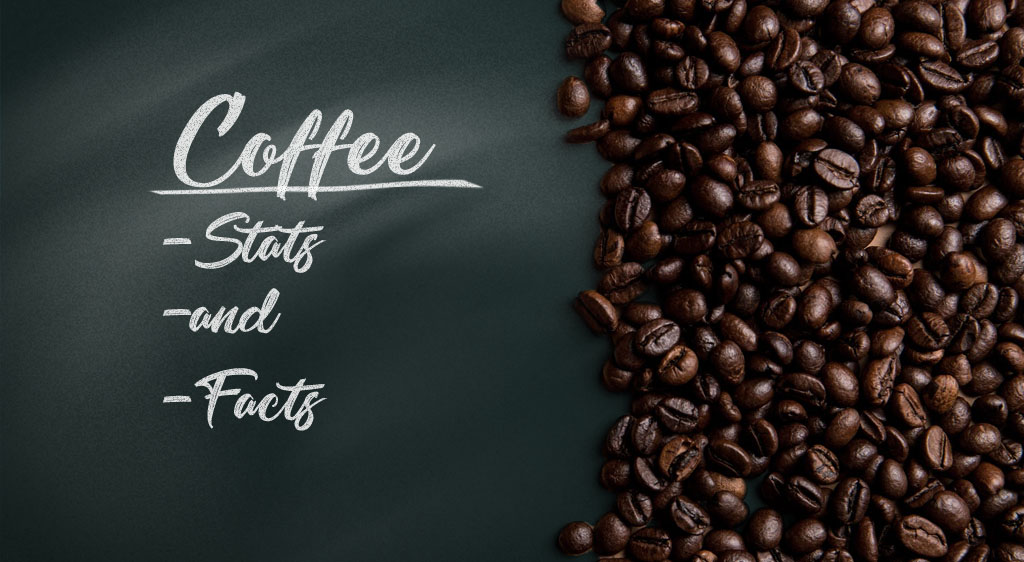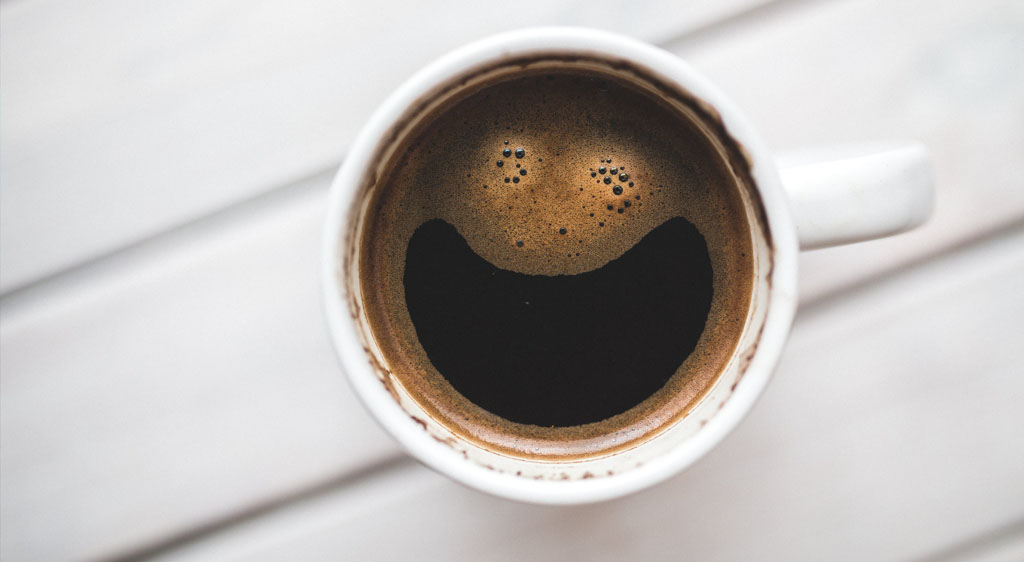Mattresses
SHOP STANDARD SIZES
SHOP STANDARD SIZES
SHOP BY TYPE
SHOP BY BRAND
RV Mattresses
Adjustable Beds
Shop By Brand
Shop By Size
Oversized Beds
Coffee Statistics
Many people cannot imagine going through their days without coffee. Coffee is a major source of caffeine, which is the one compound that jump-starts the mind and body after waking up. Most people drink coffee solely because of caffeine. However, coffee provides people more than just a pick-me-up. This beverage also has other benefits for the human body as well as other compounds besides caffeine that have their own unique health-promoting effects.
The Most Surprising Coffee Statistics
- Finland is the number 1 country that consumes the most coffee.
- The United States is the number 1 country that imports the most coffee.
- Brazil is the number 1 producer of coffee in the world.
- Coffee is 40% caffeine.
- A standard coffee mug is around 8 to 10 fluid oz, or around 240 to 300 mL.
- Majority of the coffee consumed is Arabica, comprising around 70 to 80% of the market in the world.
- The general lethal dose of caffeine is 10 g, although this can vary from person to person.
- As of February 2020, 11.11 million bags of coffee were exported worldwide.
(Coffee for Us), (World Atlas), (US Department of Agriculture), (Coffee in My Veins), (Intentional Coffee Organization), (Healthline)
General Coffee Statistics and Facts

1. An average Finnish person consumes 12 kg of coffee per year.
There are many reasons that researchers link to Finland’s high coffee consumption. Finland experiences harsh cold climates, and a warm cup of coffee can offer comfort. However, this may not be a strong argument, since Finns still drink coffee during the summer months. Another possible explanation is the old and strong coffee culture. The Finns have been strong coffee drinkers for decades. Finnish novels, paintings, and essays from the early 20th century highlight the significance of coffee to the Finns. The type of coffee may also play a role. Finnish coffee is commonly made from light-roasted beans. It is soft, watery, and a bit acidic. You can easily drink Finnish coffee as is, no milk, sugar, or cream.
(This is Finland), (Forigner Fi)
2. In the US, millennials comprise 44% of total coffee consumption.
Coffee statistics show that millennials are the leading coffee consumers the world. In China, millennials account for 75% of coffee consumption. In the UK, millennials contribute 50% of all the coffee consumed when going out. They also average about 1.3 cups of coffee per day.
(Food Network), (East West Bank), (Metro), (Independent)
3. According to theNational Coffee Association (NCA), 61% of coffee consumed daily in 2019 is “gourmet”.
This trend appears to grow over the years. In 2015, gourmet coffee consumption was around 48%. This rose to 58% in 2018. The NCA defines gourmet coffee as coffee having “no more than 8 full defects in 300 grams.” The coffee “also must possess at least one distinctive attribute in the body, flavor, aroma or acidity.”
(Washington Post)
4. In the US, 78% of coffee is consumed at home.
More people appear to drink and enjoy coffee at home. In the UK, 80% of households buy instant coffee to drink at home, mostly by people aged 65 or older.
(Reuters), (British Coffee Association)
5. Coffee statistics imply that sales of specialty coffee can increase by 20% per year.
The specialty coffee market could hit $83.5 billion by 2025. As more people consume more coffee, the demand for varieties of coffee besides the usual also grows. In the US, 30 million adults drink specialty coffee every day. These drinks include mocha, espresso, latte, cappuccino, mocha café and more.
(Global Newswire)
6. However, 3 of the 4 fastest-growing retail coffee markets are in Asia.
Indonesia saw a 19.6% growth in specialty coffee from 2012 to 2016. Between these two years, the number of specialty coffee outlets also doubled to 1,025. After Indonesia is Turkey and Vietnam, which saw a growth of 17.5 and 14.9%, respectively, between 2012 and 2016.
(Foood Navigator)
Coffee and Health

7. A meta-analysis found that a cup of coffee per day can lower the risk of diabetes by 8%.
Increasing the coffee consumption to 6 cups per day can lower the risk by 33%. Caffeinated coffee also appears to slightly lower the risk more than decaffeinated coffee does. Coffee has polyphenols and minerals, such as magnesium. These additional contents may improve the effectiveness of insulin and glucose metabolism in the body.
(Dr. Ming Ding)
8. Researchers found that women who drank 4 or more cups of coffee per day had a 20% lower risk of stroke.
Moreover, the researchers found that 2 or more cups of decaffeinated coffee also lowered the risk of stroke by 11%. Interestingly, they did not find other caffeinated drinks such as tea and soda to lower stroke. Thus, there must be other components in coffee besides caffeine that protect against stroke.
(Esther Lopez-Garcia, PhD)
9. People who drink 3 and 4 cups of coffee per day have a 21 and 20% lower risk of cardiovascular disease (CVD).
On the other hand, those who drank 1 and 2 cups of coffee per day lowers their risk of CVD by 11 and 19%. However, going beyond 4 cups does not seem to have any protection against CVD as those who drank 6 cups only had a 15% lower risk.
(Alessio Crippa, PhD)
10. Coffee statistics show that there is a 24% lower risk of depression when people drink 4.5 cups of coffee per day compared with drinking less than 1.
Moreover, the risk for depression can go down by 8% for every cup of coffee a person drinks. Consuming between 68 and 509 mg of caffeine, which is between 6 oz. to 2 cups of coffee, can also reduce the risk of depression by 28%. Antioxidants called polyphenols are present in both caffeinated and decaffeinated coffee. These polyphenols can lower the damages due to oxidative stress and inflammation. These benefits can have positive effects on the mood of people.
(Longfei Wang, PhD)
11. Researchers found that there is a 25% lower risk of developing Parkinson’s Disease (PD) with higher consumption of caffeinated coffee.
Similarly, the researchers also found that every 300 mg increase in caffeine intake can reduce the risk for developing PD by 24%. A region of the brain called the striatum has receptors for adenosine. When adenosine binds to those receptors, dopamine is less likely to bind to its own receptors and exert its effect. In PD, a portion of the brain called the substantia nigra loses neurons that produce dopamine. This causes the motor problems we see in PD since dopamine is necessary for normal motor functions. Another side of the story is adenosine, which has receptors in another portion of the brain called the striatum. When adenosine binds to its receptors in striatum, the dopamine there is less likely to bind to its own receptors. However, caffeine and its major metabolite, paraxanthine, compete with adenosine for its receptors. By doing so, scientists propose that caffeine and metabolite allow the remaining dopamine in the the striatum to bind to its receptors and exert its effects, which includes protecting the dopamine-producing neurons in the substantia nigra.
(Joao Costa, PhD), (Widya Dwi Aryati)
Coffee and Sleep

12. Researchers found that students who had high caffeine intake (more than 1 per day) from either soda or coffee were 1.9 times more likely to struggle with sleep.
Moreover, the researchers found that these students are 1.8 times more likely to be tired the next morning. Going back to the story of adenosine, when this molecule binds to its receptors, some of the effects include lower brain activity, making us feel tired or sleepy. Thus, when caffeine binds to the adenosine receptors instead, we feel awake. Moreover, caffeine also stimulates the pituitary gland to produce adrenaline, making us feel more alert.
(Rebecca L. Orbeta, M.P.A), (Simon Cappelletti)
13. A study found that people who consume between 53.5 and 304.8 mg of caffeine had insomnia symptoms.
The people who participated in the study had an average sleep duration of 6.8 hours. Daytime sleepiness was also present in 18.6% of the participants. Thus, caffeine intake may not only disrupt sleep, but also daytime activities.
(Ninad S. Chaudhary, M.B.B.S., M.P.H)
14. Research suggests that caffeine intake should stop 6 hours before bed.
The researchers found that having 400 mg of caffeine, which is about 4 cups of coffee, up to 6 hours before bed can disrupt sleep.
(Christopher Drake, PhD)
15. Research also suggests consuming caffeine and sleeping for 15 to 20 minutes is the best way to do a coffee nap.
A coffee nap is when you drink coffee, or any caffeine source, before sleeping for a few minutes so you feel energized when you wake up. Caffeine usually takes effect about 15 to 20 minutes, hence the time. When your nap is longer, such as 30 minutes or more, your brain can enter slow-wave sleep. Waking up from this can make you feel groggy.
(L A Reyner and J A Horne), (Dr. Mitsuo Hayashi and Dr. Tadao Hori), (Dr. Tassi Patricia and Dr. Alain Muzet)
Conclusion
As many in the world drinks coffee, this beverage has become a contributor to many economies. Moreover, coffee has become more than just a beverage to wake us up. Just like beer, it is a beverage that allowed the formation of cultures around it. When small gatherings happen, it is often over coffee. If a guest comes over, coffee is one of the usual things the host offers. Because of the large demand of coffee, brewers have also become artists as they create unique coffee-based concoctions to satisfy the ever-curious palettes of drinkers. However, beyond the caffeine and the shear pleasure of drinking it, coffee also offers us several health benefits. Phytochemicals such as antioxidants are also present in coffee, and they can help protect our bodies from the oxidative stress. Thus, next time you sip on a cup of joe, contemplate on how your humble beverage has affected and continue to affects the world.
References
Coffee for Us:
https://coffeforus.com/coffee-consumption-by-country-top/
Wold Atlas:
https://www.worldatlas.com/articles/top-coffee-producing-countries.html
US Department of Agriculture:
https://fdc.nal.usda.gov/fdc-app.html#/food-details/171890/nutrients
Coffee in My Veins:
https://coffeeinmyveins.com/standard-coffee-cup-sizesin-oz-and-ml/
International Coffee Organization:
http://www.ico.org/news/icc-112-4e-consumption-asia.pdf
Healthline:
https://www.healthline.com/health-news/how-you-can-die-from-caffeine
International Coffee Organization:
International Coffee Organization:
http://www.ico.org/prices/m4-imports.pdf
Foreigner.fi:
Food Network:
https://www.foodnetwork.com/recipes/articles/easy-cauliflower-pizza-crust-recipe
East West Bank:
https://www.eastwestbank.com/ReachFurther/en/News/Article/For-Chinese-Millennials-Coffee-is-Becoming-a-Lifestyle
Metro:
https://metro.co.uk/2018/04/16/brits-drinking-around-95-million-cups-coffee-day-7471090/
Independent:
Washington Post:
Reuters:
British Coffee Association:
https://www.britishcoffeeassociation.org/coffee-in-the-uk/coffee-facts
Global Newswire:
Food Navigator- Asia:
https://www.foodnavigator-asia.com/Article/2017/03/02/Asia-leads-the-way-in-global-coffee-growth#
Ding et al., 2014:
https://pubmed.ncbi.nlm.nih.gov/24459154/
Lopez-Garcia et al., 2009:
https://www.ncbi.nlm.nih.gov/pmc/articles/PMC2729465/
Crippa et al., 2014:
https://academic.oup.com/aje/article/180/8/763/2739131
Wang et al., 2015:
Ding et al., 2015:
https://pubmed.ncbi.nlm.nih.gov/26572796/
Costa et al., 2010:
https://pubmed.ncbi.nlm.nih.gov/20182023/
Aryati et al., 2018:
© 2025 Rest Right Mattress. All Rights Reserved.

